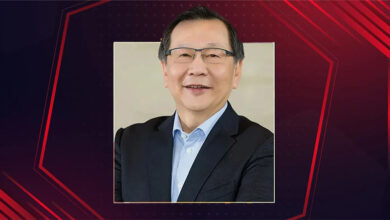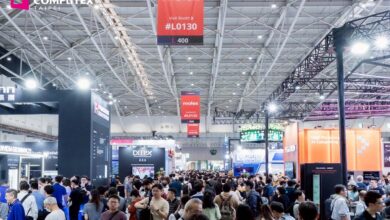The China Hi-Tech Fair (CHTF) has, over the past quarter century, emerged as China’s premier technology exhibition and one of the most important innovation showcases in Asia. More than just an annual trade show, CHTF is a symbol of China’s aspirations to transform its economy from one based on low-cost manufacturing into a powerhouse of research, innovation, and high-tech production. Held annually in Shenzhen, the city that has become synonymous with China’s rapid economic rise, the fair embodies the nation’s trajectory from reform-era experimentation to twenty-first century technological leadership.
Origins in a Time of Transition
The idea for the China Hi-Tech Fair was born in the late 1990s, at a moment when China was at a critical juncture. The country’s economic reforms had already created astonishing growth, and Shenzhen itself—once a fishing village of 30,000 people had grown into a sprawling metropolis of millions. It had been designated as China’s first Special Economic Zone (SEZ) in 1980, and in less than two decades it had attracted manufacturing investment from around the world, earning the reputation as the “world’s factory”.
Yet, by the late 1990s, China’s leadership recognized that low-cost assembly alone could not sustain long term growth. To move up the global value chain, China needed to foster indigenous innovation, encourage research and development, and cultivate homegrown technology companies that could compete internationally. Out of this realization, the China Hi-Tech Fair (CHTF) was launched in 1999. The fair was supported jointly by key ministries of the central government particularly the Ministry of Science and Technology and the Ministry of Commerce as well as by the provincial and municipal governments of Guangdong and Shenzhen.
From the very beginning, CHTF was envisioned not just as an exhibition, but as a national platform: a place where Chinese research institutions, startups, and major companies could showcase their achievements, where policymakers could articulate the country’s strategic priorities, and where international cooperation in technology could take root.
Early Years: A Domestic Showcase (1999 – mid-2000s)
The inaugural fairs were modest compared to today’s standards but significant in symbolism. They brought together universities, state owned enterprises, and emerging private firms that were beginning to invest in research and innovation. In these early editions, the focus was on telecommunications, electronics, and software, fields in which China was eager to close the gap with the West.
Shenzhen was already home to a handful of ambitious firms like Huawei and ZTE, which were experimenting with telecommunications equipment, and CHTF provided them with a public stage to demonstrate their growing capabilities. At the same time, academic institutions such as Tsinghua University and the Chinese Academy of Sciences were invited to present research breakthroughs, highlighting the bridge the fair sought to build between pure science and industry.
While international participation was limited in the first few years, the fair quickly gained attention as a window into China’s future. By 2003 – 2004, delegations from Europe, the United States, Japan, and South Korea began setting up pavilions. The early 2000s also saw the first attempts to integrate venture capital forums into the event, connecting Chinese startups with domestic and international investors.
Expansion and Internationalization (mid-2000s – early 2010s)
By the mid 2000s, CHTF had entered a new phase. The Chinese economy was growing at double-digit rates, and the government had made science and technology innovation a cornerstone of its development strategy. The fair grew in both scale and scope, now covering a much broader range of fields including biotechnology, clean energy, environmental technologies, advanced manufacturing, and nanotechnology.
One of the most significant shifts during this era was the fair’s increasingly international character. Countries established national pavilions not only to showcase their technologies but also to signal their interest in collaboration with China. Germany, the United States and Japan were among the early leaders in this regard. Multinational corporations also began to use CHTF to introduce their products to the Chinese market, recognizing that the fair had become an essential entry point into China’s rapidly expanding tech ecosystem.
At the same time, Shenzhen itself was transforming. The city was evolving beyond a hub for contract manufacturing into a center of innovation-driven enterprises. Startups were emerging in fields such as robotics, renewable energy, and consumer electronics. Companies like DJI Innovations, which would later become the global leader in civilian drones, began to appear at the fair, signaling how CHTF could serve as a springboard for new Chinese champions.
The Era of Innovation Leadership (2010s – Present)
The 2010s marked the moment when CHTF became not just a showcase of catch-up innovation, but a stage where China asserted leadership in frontier technologies. With the rise of artificial intelligence, 5G telecommunications, robotics, cloud computing, and smart cities, the fair reflected the priorities of a country determined to lead the next wave of technological transformation.
Huawei, for example, regularly used CHTF to display its advances in 5G and network infrastructure, underscoring its ambition to dominate global telecommunications. DJI, whose drones revolutionized filmmaking and surveying, became one of the most celebrated exhibitors, embodying Shenzhen’s reputation as a city of makers and innovators. The presence of these global leaders turned CHTF into a magnet not only for local audiences but for international media and investors.
The fair also grew in terms of participation. By the late 2010s, it was attracting over half a million visitors annually, with thousands of exhibitors from more than 40 countries. It was no longer just a national fair; it had become a global meeting point. The investment and financing forums became a critical part of the event, connecting startups with venture capital and government funding, while thematic conferences invited Nobel laureates, leading scientists, and CEOs to discuss the direction of global innovation.
The government’s presence remained strong. CHTF was, and still is, a venue where officials announce new policies, emphasize strategic priorities such as green technology and semiconductor independence, and encourage international collaboration on favorable terms. This dual role as both a market-driven exhibition and a state backed policy instrument has made CHTF unique compared to other global fairs such as CES in Las Vegas or Computex in Taipei.
Symbolism and Global Significance
The China Hi-Tech Fair is significant not just for the products and technologies on display, but for what it represents. It is a mirror of China’s technological trajectory: from catching up with the developed world, to becoming a peer, and now striving to lead. It is also a statement about Shenzhen’s identity. Once defined as a place of cheap manufacturing, the city is now celebrated as a cradle of global tech giants, and CHTF is the annual festival that encapsulates this transformation.
For foreign participants, CHTF is both an opportunity and a challenge. On one hand, it offers unparalleled access to China’s innovation landscape and a chance to build partnerships in the world’s largest consumer market. On the other, it highlights the growing competitiveness of Chinese companies that are no longer imitators but innovators.
Conclusion
From its founding in 1999 to the present day, the China Hi-Tech Fair has evolved from a modest domestic showcase into a global platform for technology and innovation. It has tracked and symbolized China’s broader transformation: from an economy defined by low cost labor to one increasingly defined by research, entrepreneurship, and advanced technologies. Alongside events like CES and Computex, CHTF has secured a place on the global calendar of must-attend technology fairs.
As China moves deeper into fields such as artificial intelligence, green energy, semiconductors, and space exploration, CHTF will continue to serve as a critical window into the nation’s ambitions and achievements. It is not just a fair; it is a stage where China presents its technological identity to the world.



